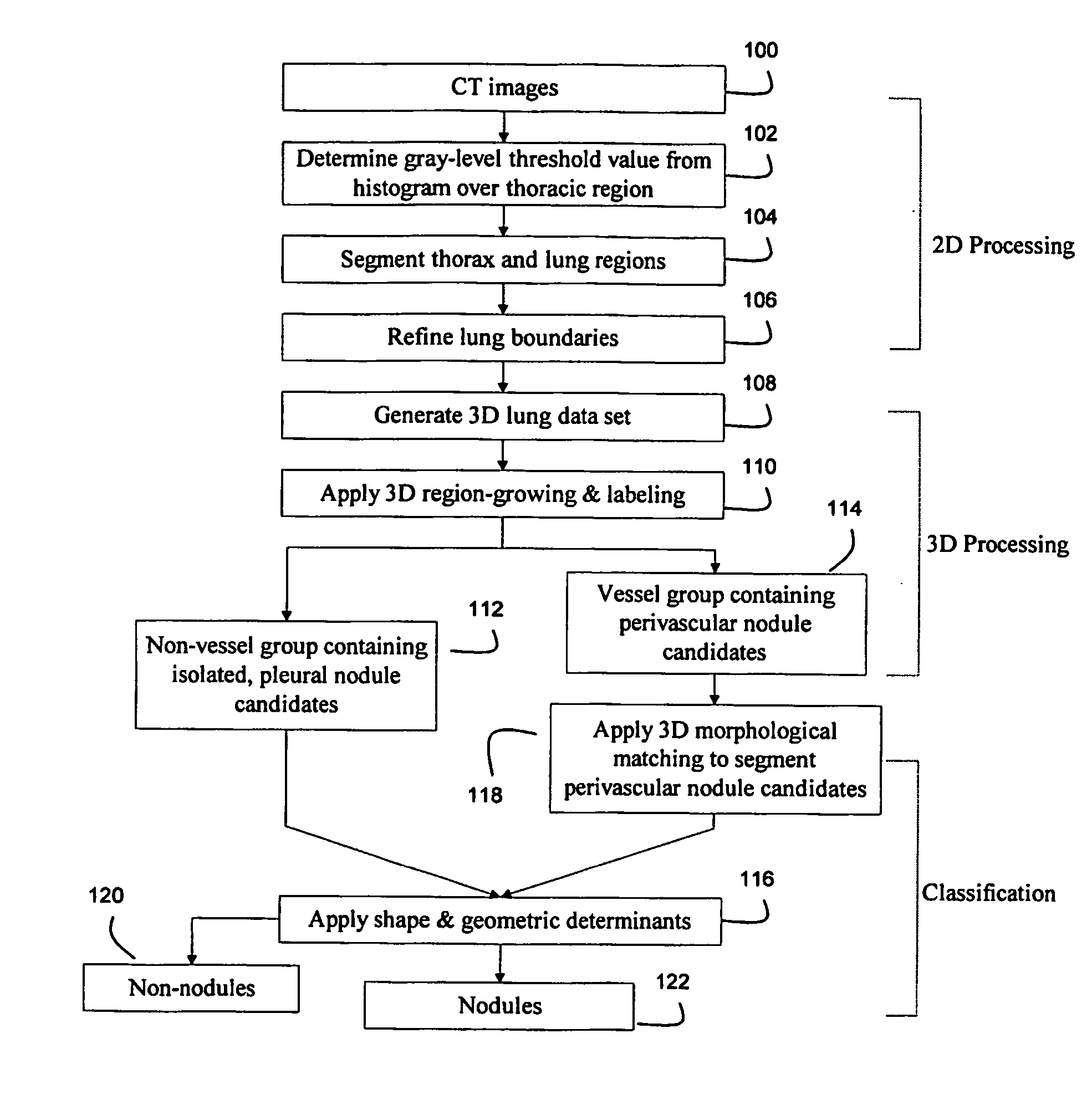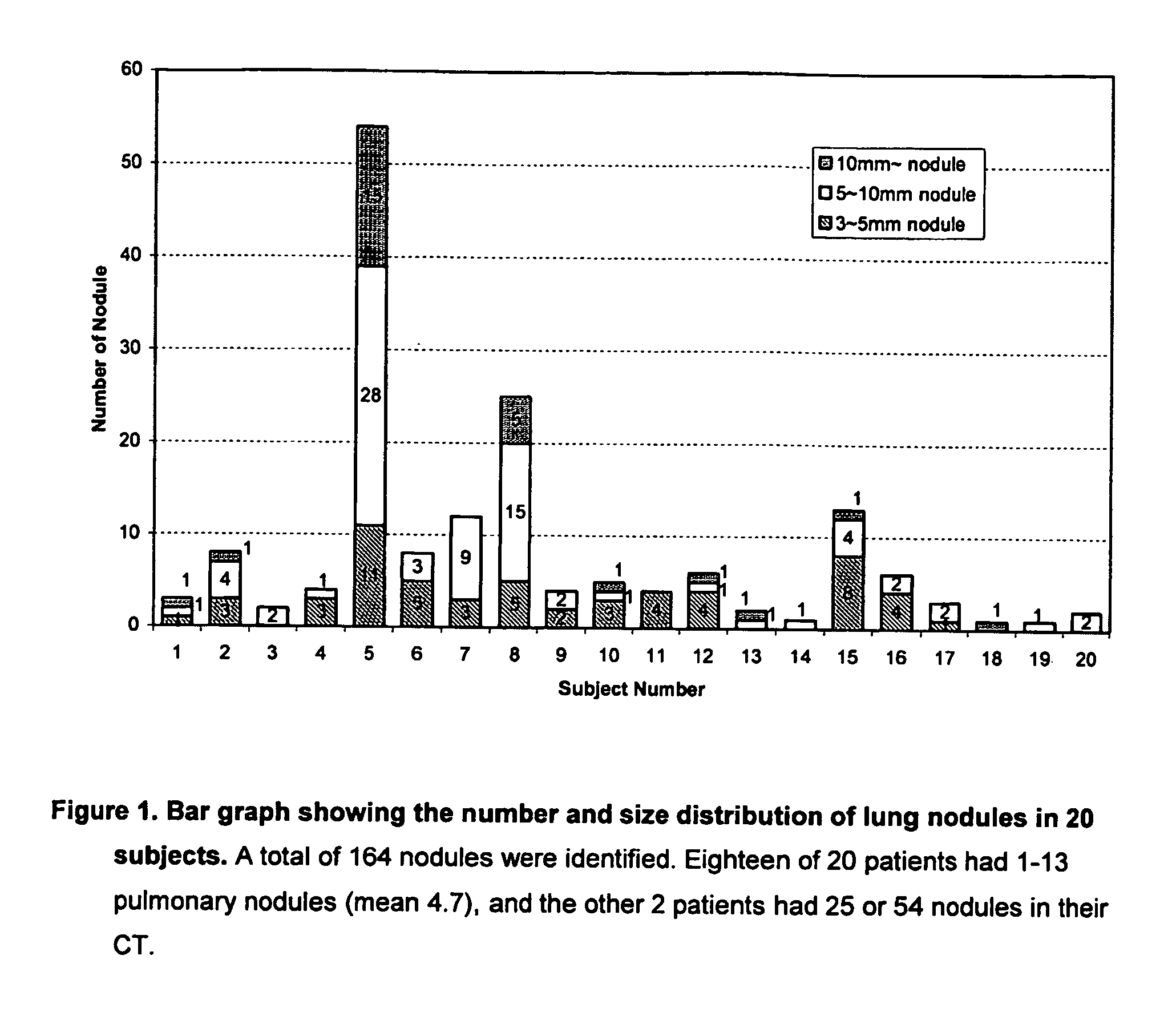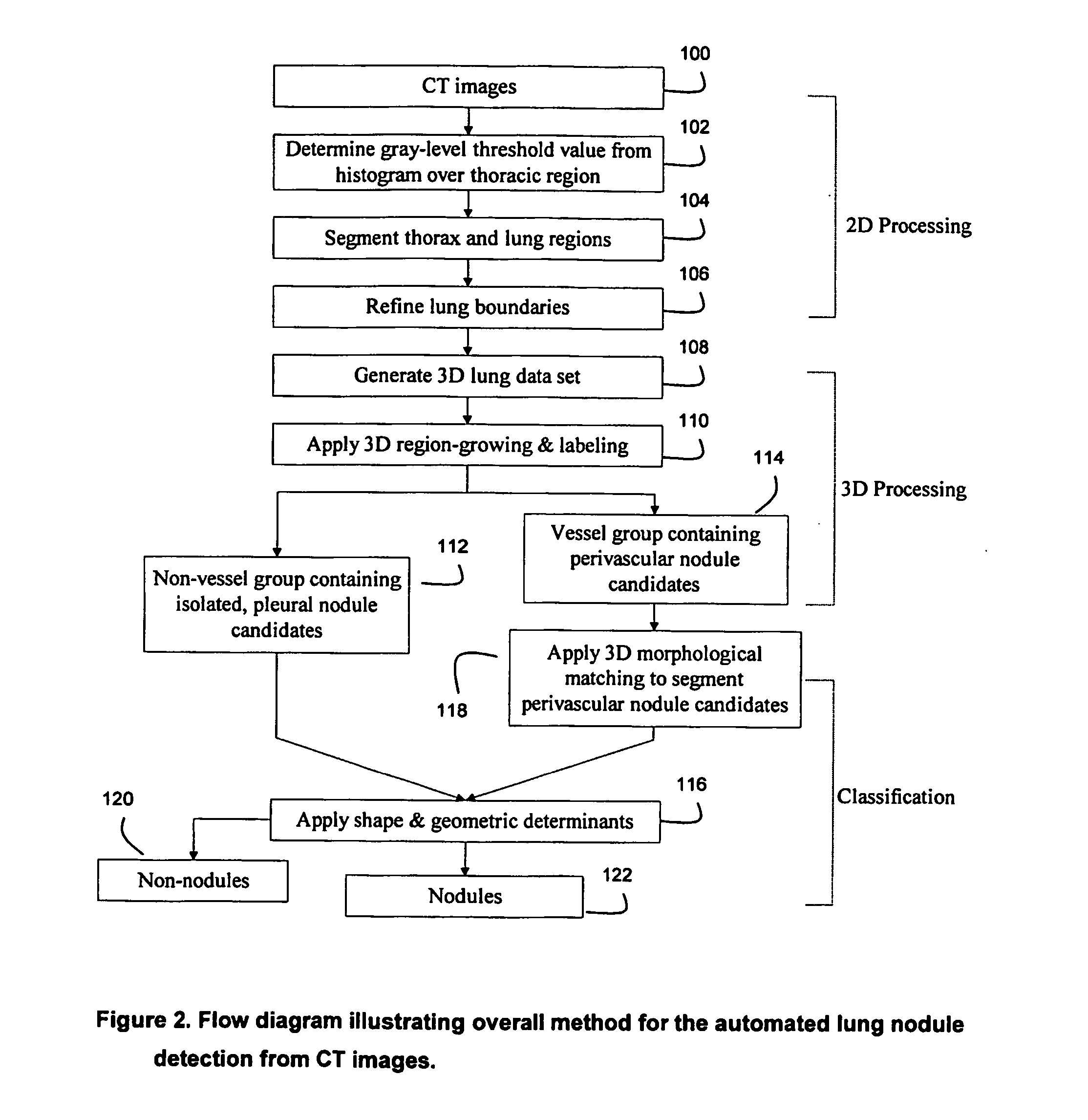Method and apparatus for automated detection of target structures from medical images using a 3d morphological matching algorithm
a morphological matching and target structure technology, applied in image analysis, image enhancement, instruments, etc., can solve the problem of difficult differentiation of perivascular nodules, and achieve the effect of saving computing power and simplifying detection
- Summary
- Abstract
- Description
- Claims
- Application Information
AI Technical Summary
Benefits of technology
Problems solved by technology
Method used
Image
Examples
Embodiment Construction
[0026] The lung nodule detection algorithm of the preferred embodiment is a combination of 2D and 3D operations. While the 3D operation is more general and more powerful, in some image processing steps the 2D operation is preferred because it is more efficient and easier to implement. The combined 2D / 3D approach of the preferred embodiment represents an efficient technique for pulmonary nodule detection and may be used by radiologists when the CT images are reviewed for the presence of lung nodules.
[0027] The CT images may be generated by a CT scanner as is well known in the art. The generated CT images are preferably electronically transferred from the scanner to a computer such as a PC workstation. The automated detection algorithm of the preferred embodiment is then executed on the CT image data by software.
[0028] In testing the preferred embodiment, a database of 20 diagnostic thoracic CT scans from 20 patients (13 men, 7 women; age range of 40-75 years with a mean age of 57 y...
PUM
 Login to View More
Login to View More Abstract
Description
Claims
Application Information
 Login to View More
Login to View More - R&D
- Intellectual Property
- Life Sciences
- Materials
- Tech Scout
- Unparalleled Data Quality
- Higher Quality Content
- 60% Fewer Hallucinations
Browse by: Latest US Patents, China's latest patents, Technical Efficacy Thesaurus, Application Domain, Technology Topic, Popular Technical Reports.
© 2025 PatSnap. All rights reserved.Legal|Privacy policy|Modern Slavery Act Transparency Statement|Sitemap|About US| Contact US: help@patsnap.com



